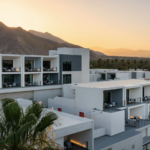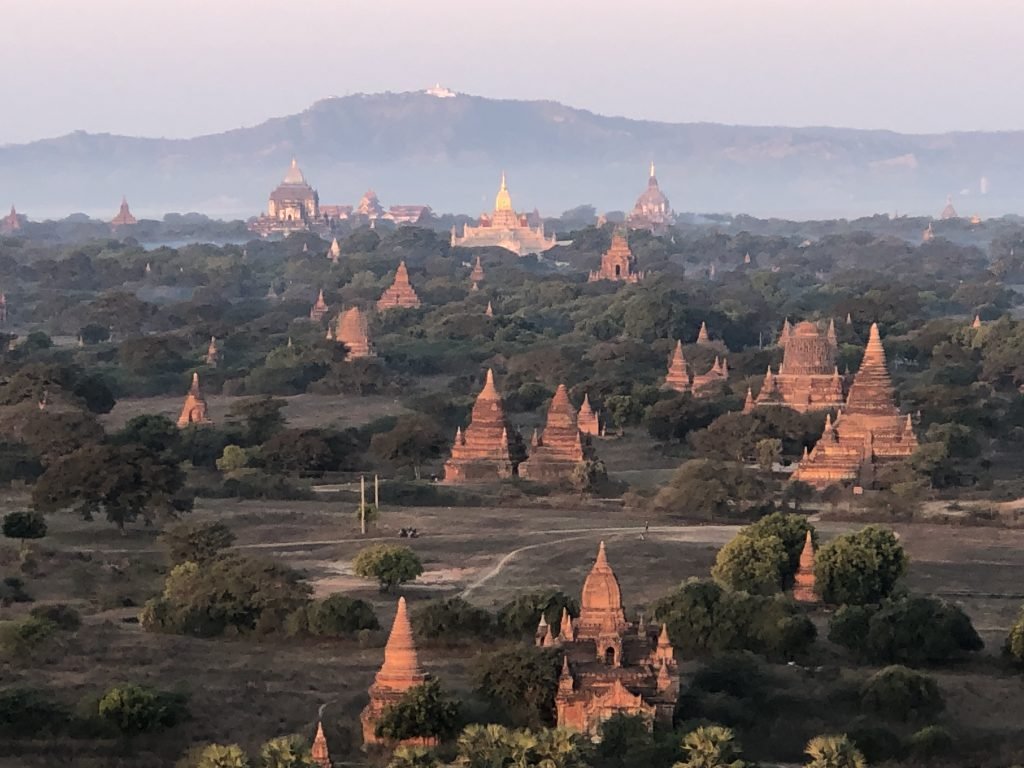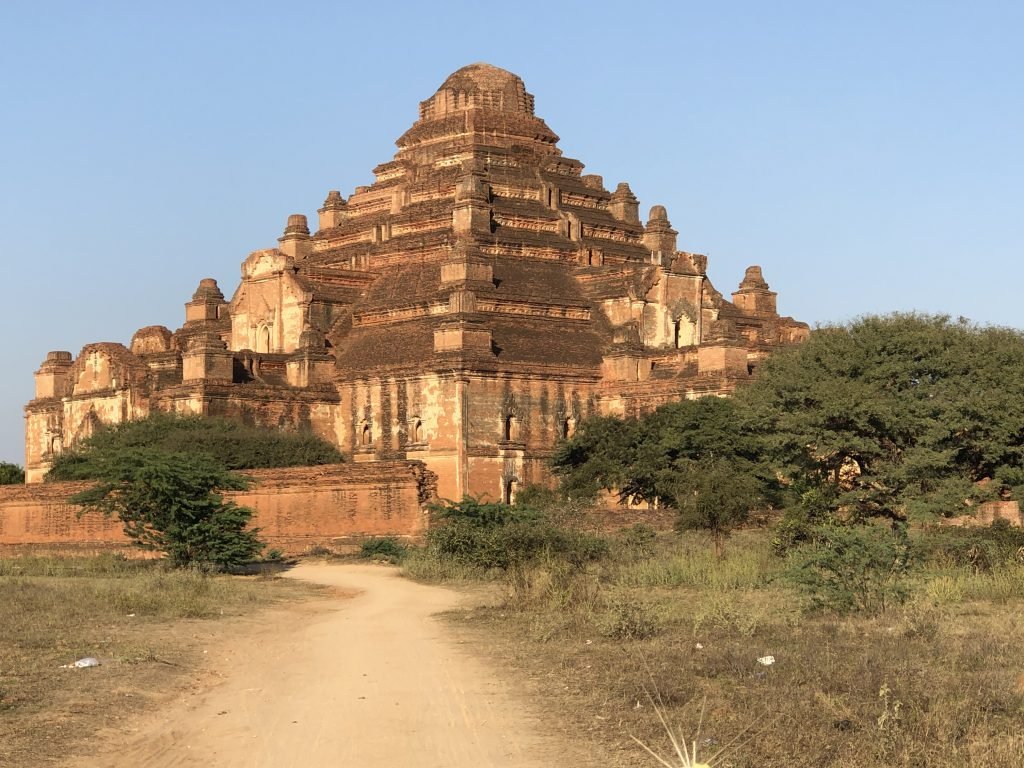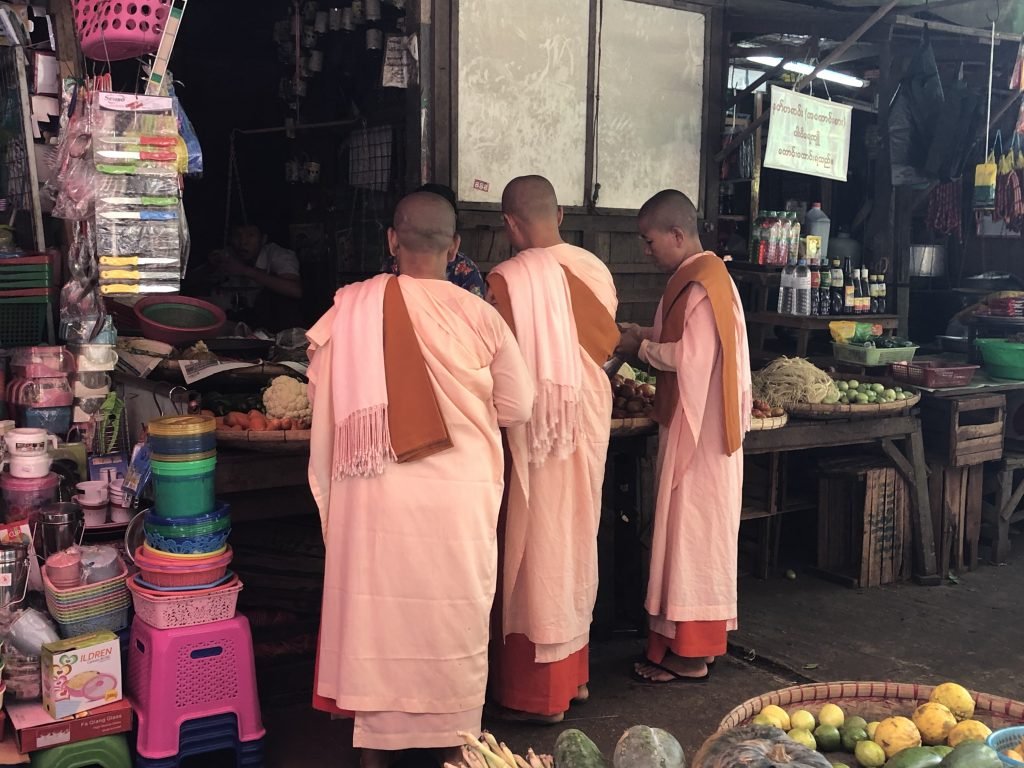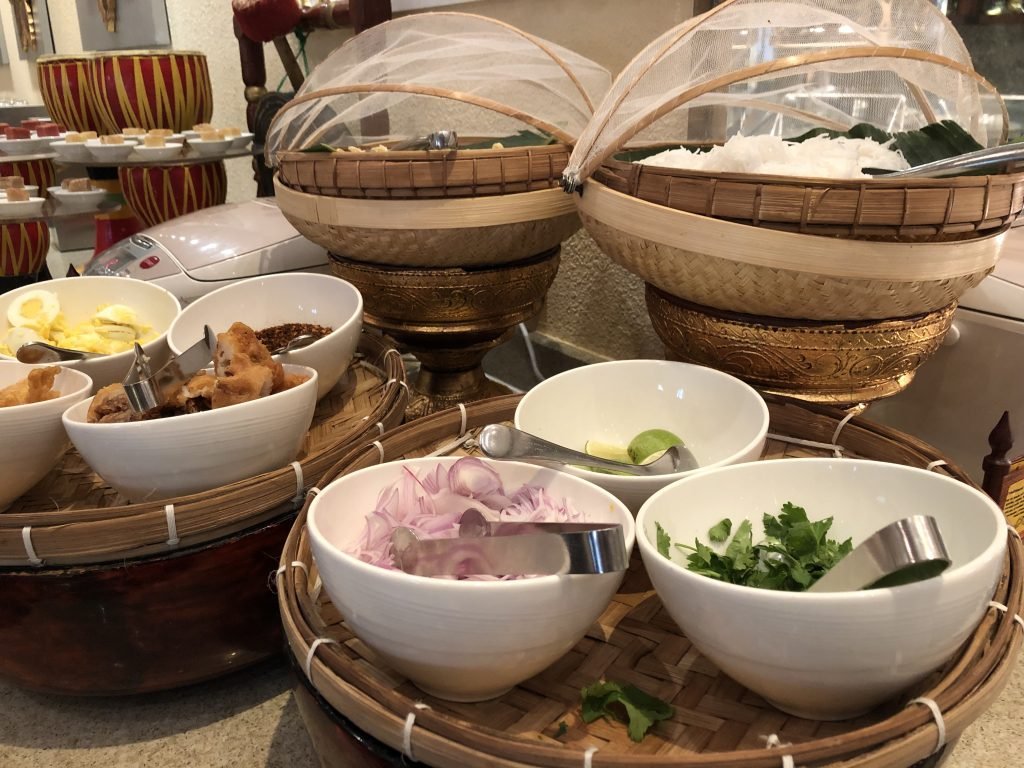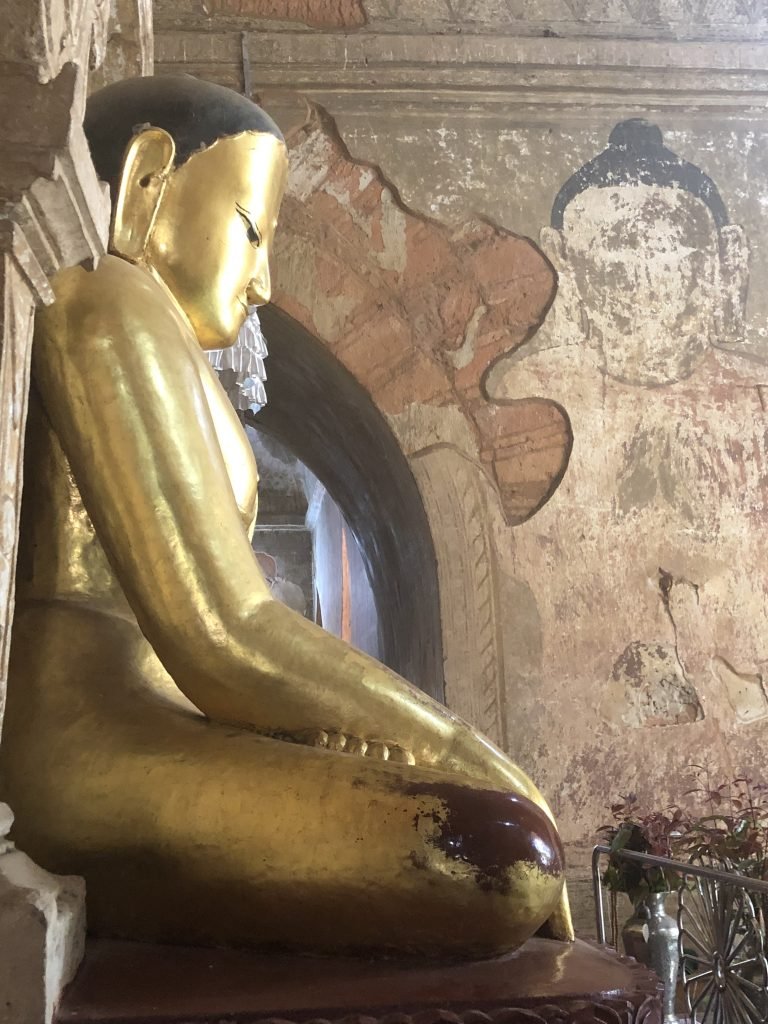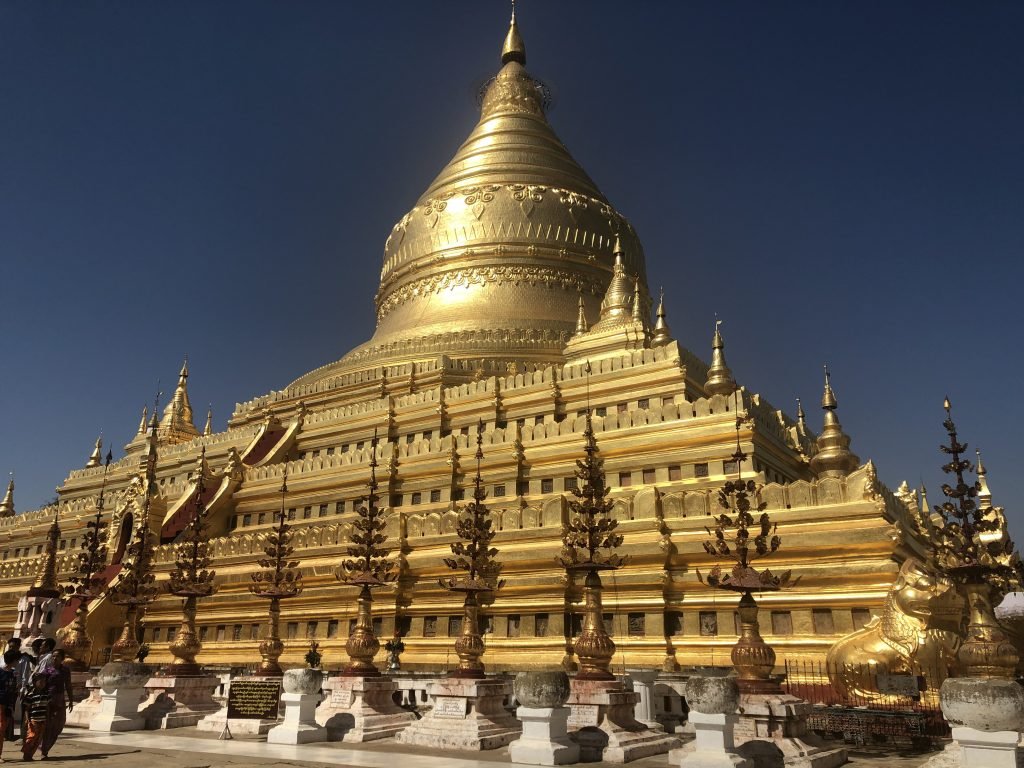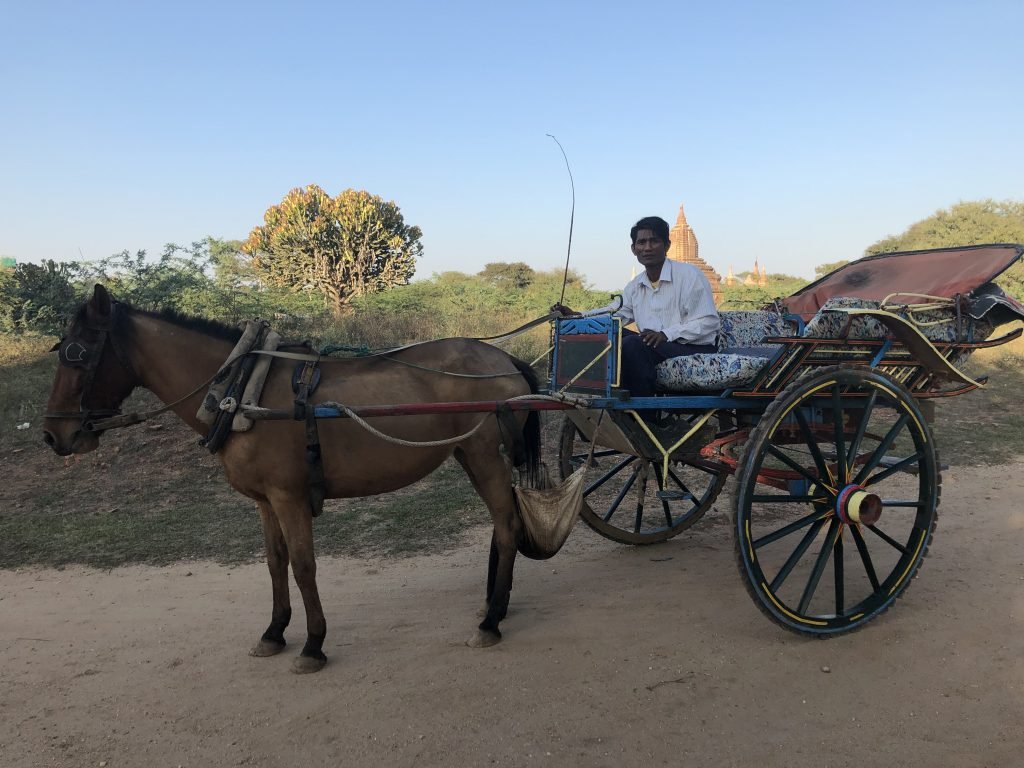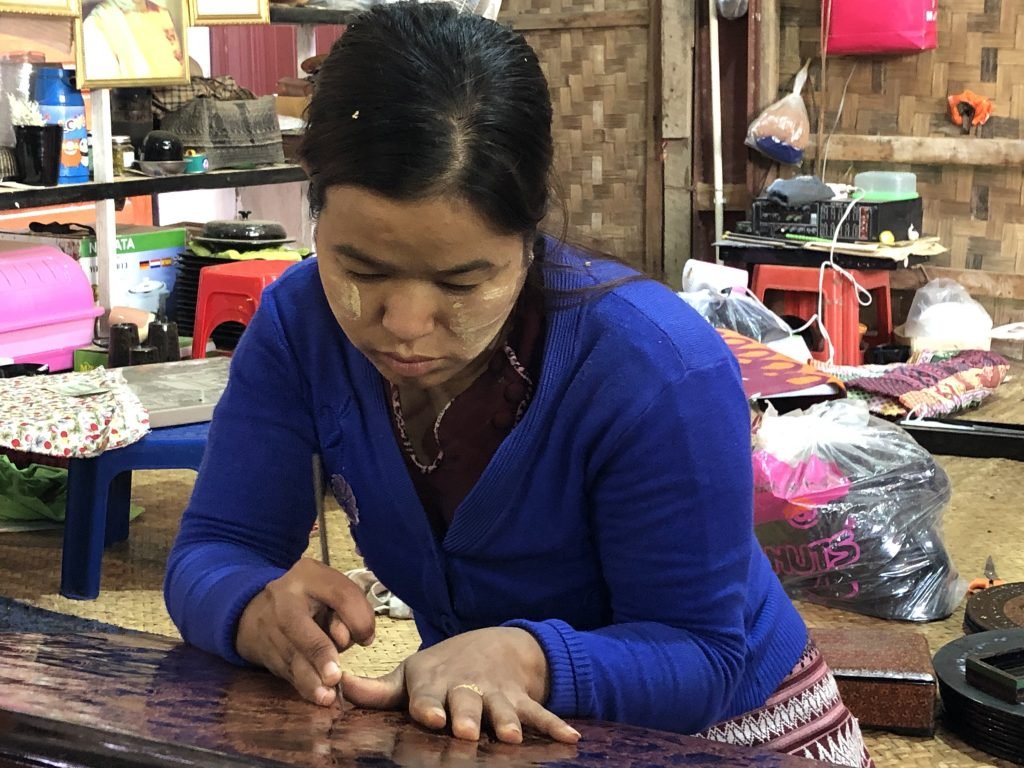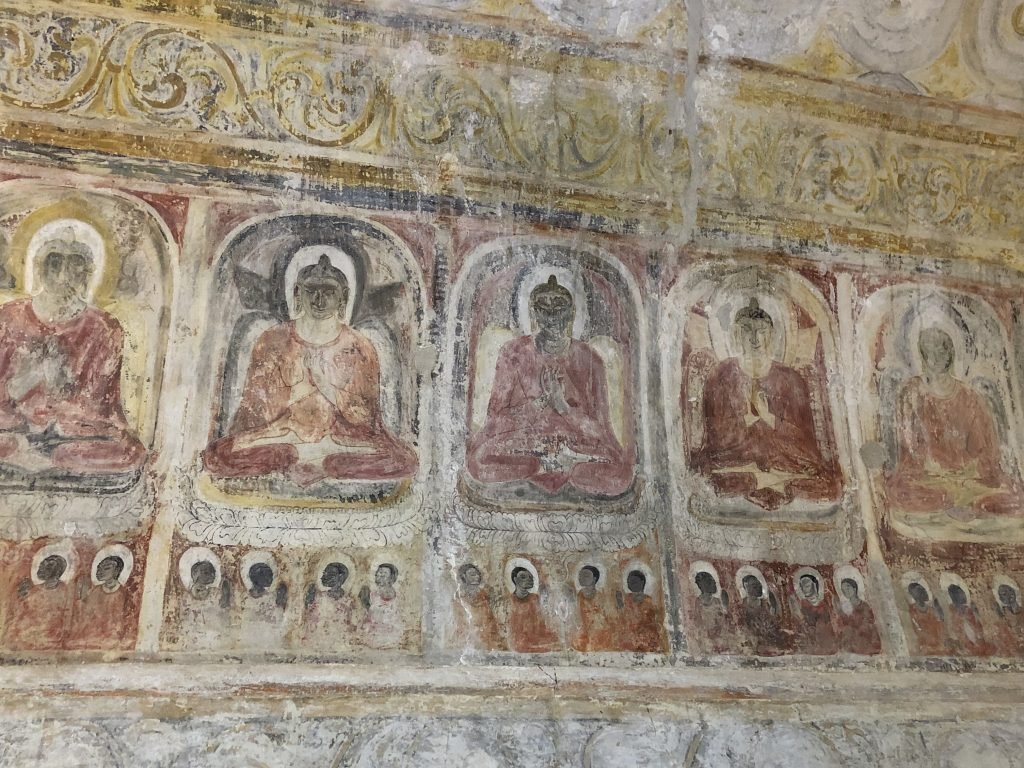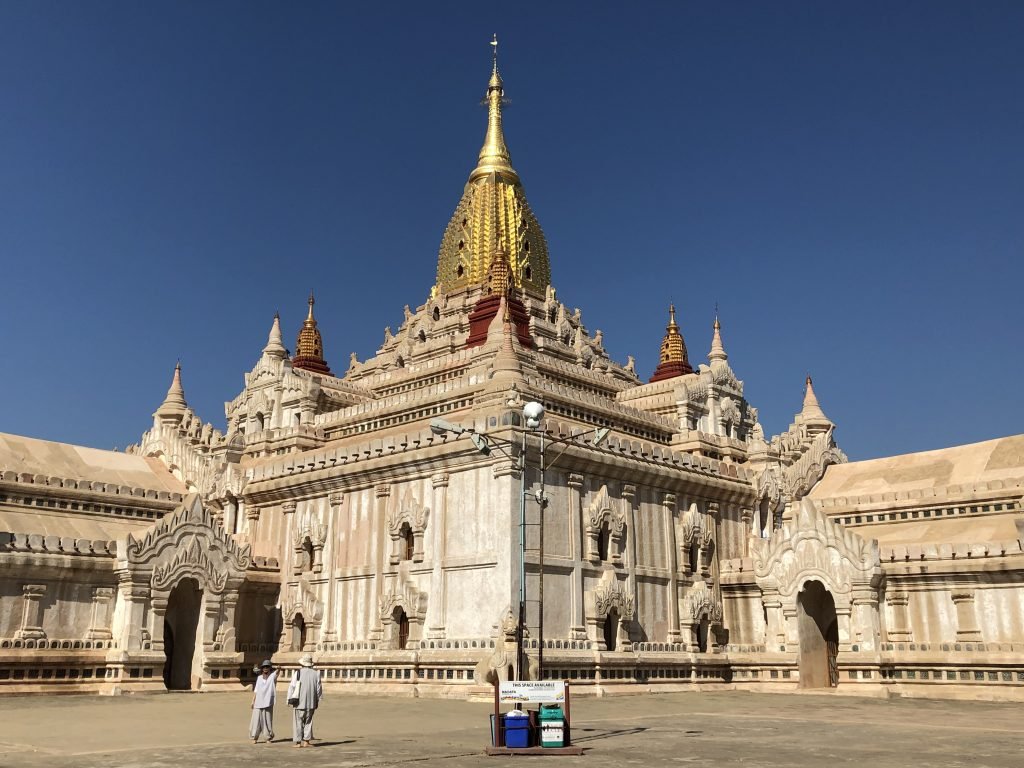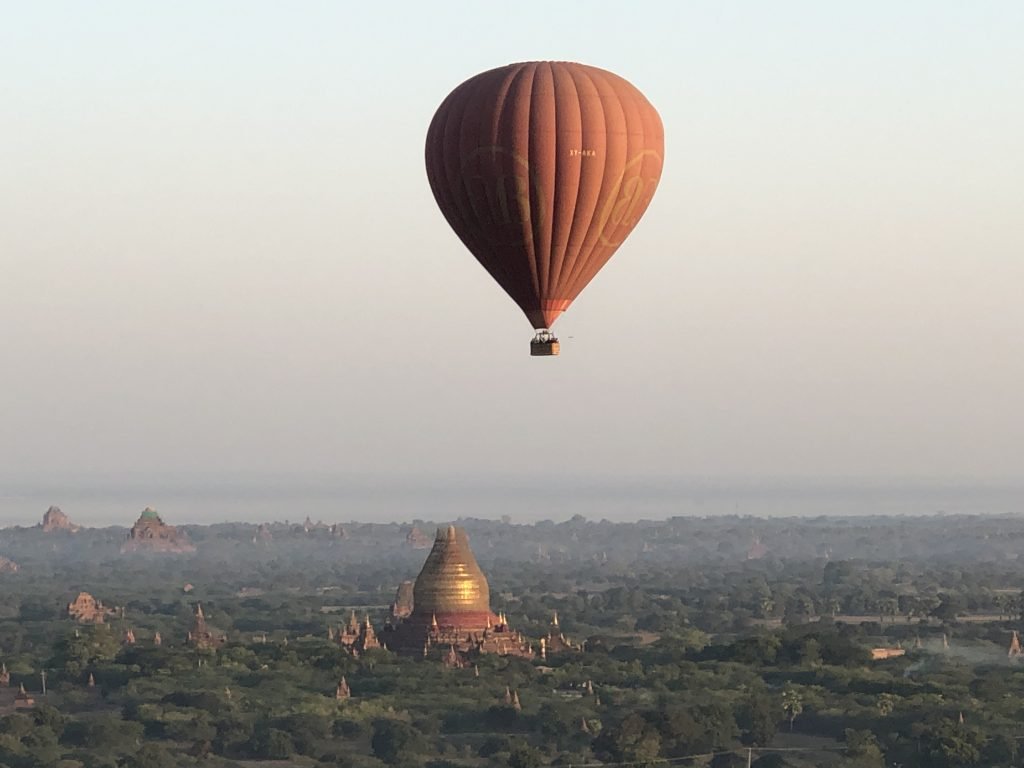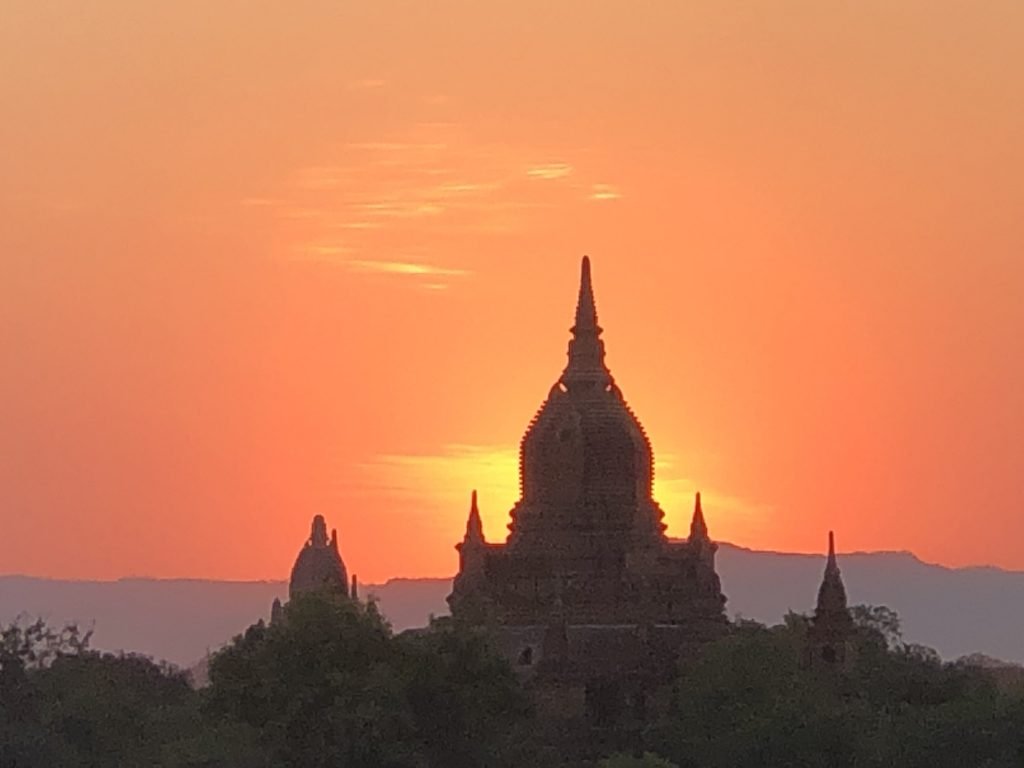
Magical, Mystical Bagan is a Feast for the Senses
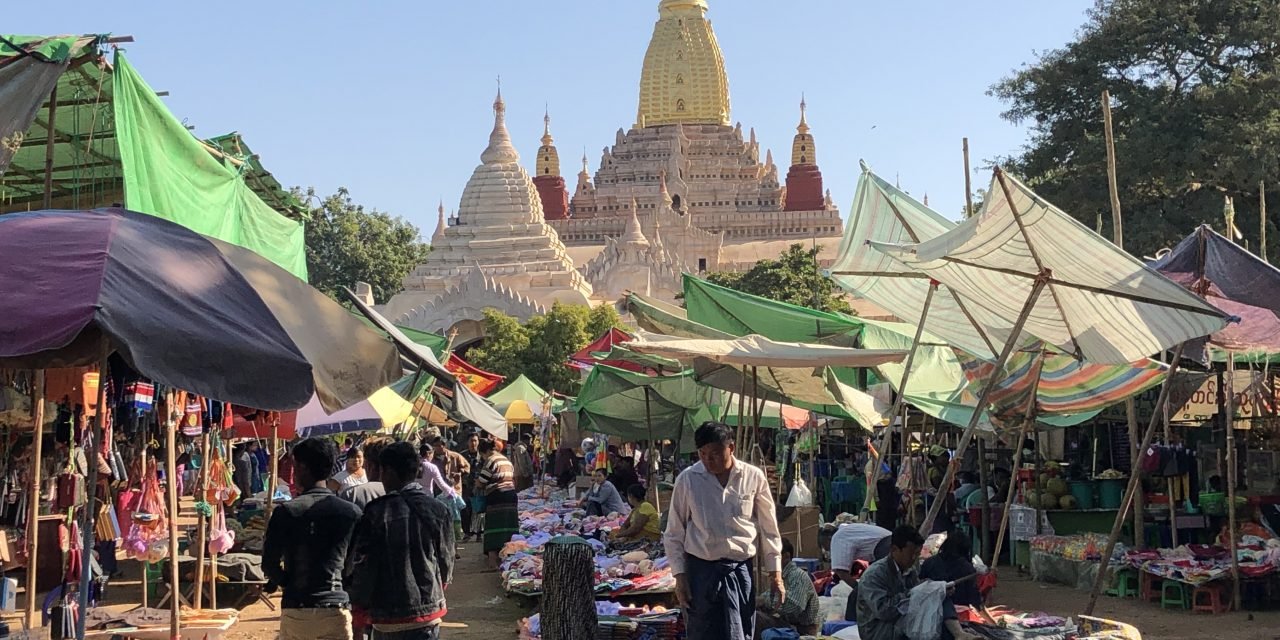
As the sun rises and paints the landscape fiery orange, I finally grasp the sheer magnitude of Bagan’s ancient monuments from my bird’s-eye perch in a hot air balloon. It’s an otherworldly skyline, dotted with pagodas, temples, shrines, stupas and monasteries as far as the eye can see.
I marvel at the unrivaled perspective I have of this archaeological paradise and its unbeatable scenery. It’s one of the many memorable experiences embodied in a custom tour of Myanmar (formerly Burma) with top-rated Journeys Within, A Wild Frontiers Company.
Bagan is the sacred mecca of Myanmar. In this “Golden Country,” long shrouded in myth and legend, pilgrims come to the “sea of temples,” prostrating themselves before towering images of the Buddha. They offer donations and whisper mantras, while saffron-robed monks recite prayers in hypnotic monotonal chants.
Religious fervor and a sense of spirituality permeates Bagan. And no wonder, as it is home to the largest collection of Buddhist structures in the world, more than 2,200 in number.
Originally the capital of the Kingdom of Pagan, the site once contained up to 10,000 temples, with many built between the 11th and 13th centuries. The kingdom was the first to unify the regions that would later comprise modern Myanmar, and helped to establish Burmese culture and ethnicity. It also embraced Theravada Buddhism with a zeal that is still very apparent across the country today.
Theravada is one of three main branches of Buddhism, which originated in northern India and Nepal before spreading across Southeast Asia. It emphasizes discipline and self-control as a means to ridding oneself of attachment to all material things, a necessary step on the pathway to enlightenment.
In its heyday, the kingdom had a population that equaled or exceeded many European cities. It was a center of learning, attracting monks and scholars from around Asia, who came to study law, medicine, philosophy and astrology. This thriving period also saw rise to an intense building boom. The people believed that good karma and a more favorable reincarnation could be acquired through the construction of temples and pagodas. And the bigger, the better, with giant, bell-shaped stupas and grand, soaring spires. The dazzling skyline impressed Marco Polo, who wrote that it “made one of the finest sights in the world.”
Interestingly, the rise of Bagan occurred at almost the same time as that of the famed complex of Angkor Wat in Cambodia. While the latter became a major tourist magnet, Bagan, however, remained hidden to the outside world. Gradually, though, as the country opened its doors to visitors, this important historical landmark has landed on more travelers’ bucket lists.
The Bagan Archaeological Zone in Old Bagan measures 26 square miles and is located on the vast, arid plain of the Irrawaddy River. With a span of this size, the site is difficult to see on foot, but there are plenty of other ways to discover its treasures. You can cycle on the various gravel roads and paths, use a motorbike, hire a guide to show you around, or hop on a horse cart. The latter offers the opportunity to experience the monuments at a languid pace, from the seat of a more traditional mode of transportation. Choose an early morning or late afternoon ride when the temples are cast in an ethereal light.
Our tour guide, Aung Ngwe, was a font of knowledge about all things Bagan. As we temple hopped, he regaled us with information about the monuments and their history, as well as about various facets of Buddhism. The pagodas range in size from tiny edifices to enormous multi-story fortresses. Some are gilded and ornate with impressively carved statues; others are simple shells with vestiges of hand painted images. There are also plenty of crumbling remains scattered across areas of deserted brush. Around the more popular temples, you’ll encounter the majority of tourists, along with the proverbial souvenir peddlers. But once off the beaten path, you can often wander around without barely seeing another soul.
A number of the temples are wrapped in scaffolding and in an obvious state of repair, primarily due to hurricane damage. Bagan is located in an active earthquake zone and has suffered from hundreds of earthquakes over the ages. The damage from these quakes, along with the effects of erosion, and neglect, has led to the destruction of thousands of sites. Major restoration efforts are helping to return some of the relics to their former glory.
There are so many monuments that it’s easy to get overwhelmed. Choose quality over quantity to prevent “temple fatigue.” Start with the Ananda Pagoda, probably the most famous pagoda in Bagan. Built in 1090, this 170-foot high masterpiece is also one of the best preserved. It’s shaped in the form of a perfect Greek cross, with four entrances and projecting porticos, and vaulted concentric corridors that ring the inner shrines. The base is decorated with glazed tiles showing scenes from Buddha’s life. Inside are four 31-foot-tall gilded, wooden images of Buddha, of which two are original. The pagoda has a golden, shimmering spire that can be seen from across the plains.
Another highlight is the 11th century, multi-tiered Shwezigon Pagoda, famous for its ancient Buddhist statues, shrines, scripture and relics. Legend has it that a tooth and bone of Gautama Buddha are preserved in a shrine within the temple complex. One of the most striking characteristics of the pagoda is its bell-shaped stupa, which became the prototype for almost all pagodas built in later years in the country. Thirty thousand copper plates cover the structure, giving it an eye-popping, gold sheen (you’ll need a pair of shades to gaze upon this masterpiece!). There’s a small compound on site that contains figurines of all 37 Nats, or Burmese spirits. To appease these spirits, most whom died a violent death and are known for their vengeful nature, people build shrines and make offerings to them.
The Gubyaukgyi Temple is a popular site. This “great painted cave temple” boasts spectacular murals inside, dating to the temple’s construction in the 12th century. Its dark interior has thankfully protected the artwork over time. Such is also the case with Kyansittha Umin, a monastery of caves built into a cliff face. The caves are recognized for their frescoes depicting the invading Mongol armies of Kublai Khan.
Other monuments of note include the impressive, terraced Htilominio Pagoda, with its sandstone decorations and plaster carvings; Nan Hpaya Temple and its eight stone figures of Brahma; Shwegugyi Temple, featuring fine carvings, a teak Buddha and a history of its construction etched in stone; Thatbyinnyu Temple, the tallest structure on the site; and Manuha Temple, among others. The latter has an interesting past, as it was built by a captive king, who expressed his feelings as a prisoner by housing four immense Buddha images in claustrophobically small niches.
Take a break from your temple explorations to roam Nyaung U Market or visit a lacquerware workshop. The market presents a slice of local life and is a bustling hive of activity. It’s a colorful scene with vendors attired in longyi (the sarong-like garb worn by men and women) selling everything from fresh fish, meat and produce to tea, spices, handicrafts, clothing and more.
Just walking around the warren of stalls is a multi-sensory experience, of sights, sounds, smells and tastes. You’ll encounter the friendly Burmese people, who’ll greet you with “Mingalabar,” meaning, “it’s a blessing.” Many of the women and children you see will have a yellow powder on their cheeks, which is a natural sunscreen called “thanaka.” The powder is made by rubbing the bark of the thanaka tree on a stone block and then adding water to create a paste.
Nuns in pink robes are omnipresent in the market, as they collect their daily alms from local residents. Making alms rounds is a way for a monastery or nunnery to receive food, as well as for Buddhists to make their donations.
Myanmar has the highest number of people in the monastic order than any other country in the world. There are approximately 500,000 monks, nuns and novices at any one time in this nation of 53 million.
Entering monkhood is a rite of passage for many young boys, although most only spend a short time in the order and do not make a lifetime commitment. The novices often come from poorer families, others are orphaned. They are brought to the monasteries and nunneries to receive care and education.
Bagan is famous for traditional lacquerware production, and a tour of one of the workshops provides an interesting glimpse into the complexities of this craft. Most of the lacquerware makers are families that have been creating lacquerware for generations. During a tour, you’ll learn that the lacquer comes from the resin of the Thit-si tree. It’s collected like sap from notches made at the base of the trunk. The body of an object is then constructed with strips of bamboo and painted with lacquer – nine coatings outside and nine inside. Each layer takes a week to dry. Four and a half months later, the piece reaches the design stage, where a pattern is intricately carved (freestyle, no less) using a small knife. Finally, the pattern is filled in with color, typically derived from natural dyes.
When it comes to Burmese food, you’ll find intense flavors and an array of spices with influences from the cuisines of India, Thailand and China. Meals consist of a variety of dishes that can include soup (typically lentil or dhal), fresh and/or boiled vegetables eaten with several dips, a tart salad of veggies tossed with lime juice, peanuts and chilies, and a curried or fried main entrée.
The Burmese love their noodle dishes, which are often eaten for breakfast or as a snack. The most popular is mohinga, which consists of thin rice noodles in fish broth, and garnished with slices of boiled egg, assorted spices and fried chickpeas. Another is oun-no hkauq-sweh – noodles with coconut broth.
For tourists, one of the more unusual dishes is laphet, fermented green tea leaves mixed with a combo of dried shrimp, peanuts, fried peas, and other assorted ingredients. Get past its slimy appearance and texture and you might discover it’s actually quite edible.
End your time in Bagan with a view of the monuments at sunset, as it’s one of those pinch me moments. There are two hills designated as viewpoints, where most tourists amass to enjoy this mesmerizing spectacle. People used to stake out places atop the temples, but now it’s forbidden to climb most of them. As the sinking sun turns the sky brilliant shades of orange and gold and the pagodas become black silhouettes, a hush falls over the crowd. It’s a heavenly scene that requires no words. At some point, put your camera aside and embrace the beauty completely. Soon darkness descends, swallowing up the shapes completely.
If you go:
Wild Frontiers specializes in stylish and original small group tours and tailor-made adventures worldwide. Their Journeys Within brand focuses on Southeast Asia and seeing the culture, day-to-day life, while incorporating giving back elements. Special tours are created that get below the surface of each country. Designed by regional specialists, Journeys Within and Wild Frontiers help travelers see some of the most unique destinations on earth and make connections with the local people and communities.
www.journeys-within.com
www.wildfrontierstravel.com









